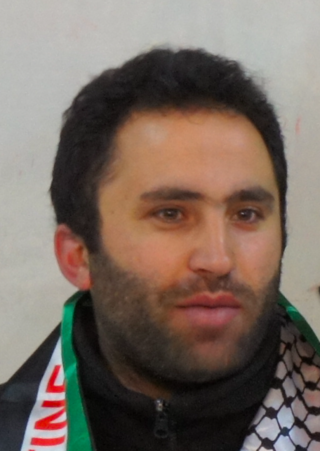The incident

According to the human rights organization Amnesty's report which is based on two witness statements, [2] and the IDF's report, the events that led to the killing of Hashlamon were as follows:
Hashlamon was on her way to school and had to pass through a checkpoint manned by Israeli soldiers on Shuhada Street in Hebron. The checkpoint, known as Checkpoint 56 or Shoter, was a small pedestrian crossing limiting Palestinians' movements in the vicinity of Hebron's Jewish settlements. She arrived at the checkpoint 7:40 in the morning. [2] She was wearing a black niqab that covered her body and her face.
A metal detector beeped when she tried to pass through the checkpoint and she was ordered to open her bag for a search. She was standing about three meters from the soldiers. She opened her bag and showed it to them who shouted at her, causing her to freeze. [2]
According to the witness Fawaz Abu Aisheh, 34, who had stood close to Hashlamon in the checkpoint and spoken to her, the soldiers ordered her to "go back" in Hebrew - a language she didn't seem to know. Abu Aisheh who spoke Hebrew tried to mediate with the soldiers but they ignored his attempts. He also tried unsuccessfully to get Hashlamon to leave the checkpoint. [2]
Four more soldiers arrived at the scene and pointed their guns at Hashlamon and Abu Aisheh. One of them fired a warning shot at the ground. The soldiers pushed Abu Aisheh away and refused his offer for translation help. At this point Hashlamon was behind metal rails separating her from the soldiers. [2]
The soldier who shot the warning shot, shot Hashlamon in her left leg causing her to fall and drop her bag. According to Abu Aisheh, it also caused her to drop a knife with a brown handle that she had been hiding under her niqab. The soldier then moved closer to Hashlamon who lay motionless on the ground until he was standing over her and shot her four or five times in the chest. [3] Other soldiers yelled at him to stop. [2]
According to the IDF, Hashlamon continued to move towards the soldiers even after warning shots had been fired. But according to Amnesty, that claim is contradicted by witness statements and photos of Hashlamon showing her standing still. [2] The photo the IDF released of Hashlamon's knife showed a knife with a blue and yellow handle which also didn't match the testimony of Abu Aisheh who said the handle was brown.
Hashlamon was left lying on the ground until ambulance arrived 30 to 40 minutes later. [2] According to one witness report, a soldier checked her pulse but did not otherwise offer medical help. According to the human rights organization Euro-Mediterranean Human Rights Monitor (Euro-Med), soldiers refused to let ambulances through and medics to provide medical assistance. [4] The ambulance first took her to the nearby settlement Kiryat Arba which lacks intensive care units. Eventually she was transferred to Shaare Zedek Medical Center in Jerusalem where she died of her wounds.
According to her father, a doctor in Hebron, the medical report that he received stated that Hashlamon died of bleeding and multiple organ failure as a result of multiple gunshot wounds. [2]
A funeral procession was held in Hebron the next day which thousands of Palestinian mourners gathered to pay their respects. [5] A demonstration was held in which the protestors demanded an international protection force to protect them from Israeli soldiers. [6]




